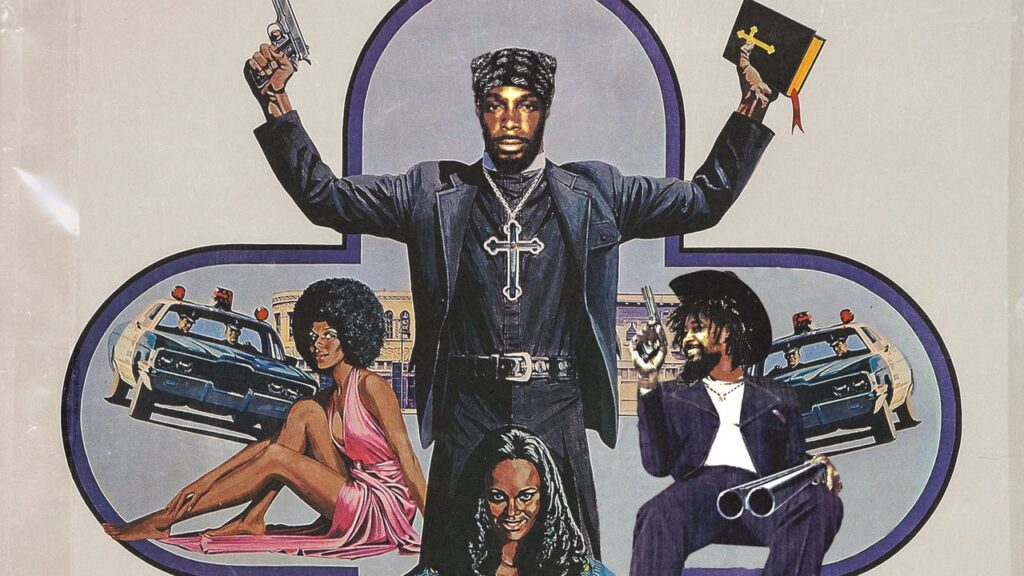
Danny Brown likes to tell the story of how he almost signed with G-Unit. In 2010, around the time of The Hybrid’s breakthrough, the Detroit rapper was palling around with Tony Yayo, workshopping a joint project. 50 Cent liked what he heard, but couldn’t brook the thought of a labelmate who dressed like an emo rocker. Brown’s rhymes were hard, but alas, his jeans were slim—he was on his own. By 2015, of course, 50’s pants were tighter than a drumhead. As G-Unit retreated into the nostalgia circuit, Brown’s blog-era technical showcases gave way to mosh-pit delirium and queasy, kaleidoscopic confessionals, each installment presaging a new avant-garde.
JPEGMAFIA, a genre-straddling iconoclast himself, shares Brown’s pharmaceutical appetites and distaste for culture-industry dross. A veteran of the U.S. Air Force and Baltimore punk clubs, he’s cultivated a comparably broad audience by contrasting frenetic glitch-hop with meme-fluent snark. Their collaborative full-length, Scaring the Hoes, produced entirely by JPEG, is a vehicle for the duo’s irreverent humor and energy that captures a pair of spitballing pranksters who nevertheless maintain perfect GPAs.
In colloquial parlance, “you’re scaring the hoes” is a request to ease up on the sanctimony. It’s a rejoinder for when Canibus stacks five-syllable adverbs on top of one another, for when Common cosplays as a lost Last Poet. The album title is a winking admission: Brown and JPEG are hardly traditionalists, yet their intensity and devotion to mechanics make them impervious to casual playlisting. On the title track, JPEG assumes the perspective of a vexed A&R, rapping over a dissonant sax instrumental: “Play something for the bitches/How the fuck you s’posed to make money off this shit?” He wrangles warped samples into thundering drum patterns on “Lean Beef Patty” and “Steppa Pig,” garnishing the bass kicks with screaming synths. The instrumentation lends the arrangements an industrial quality, but the lurching verse structures are hypnotic.
Brown meets JPEG’s tempos with alacrity, flashing a singsong flow on “Orange Juice Jones” and mirroring the jittery horn fanfare of “Burfict!” The short bursts don’t provide space for Brown to stretch his limbs, yet he remains a virtuoso in miniature: on “HOE (Heaven on Earth),” his desperate narrator reaches out to a therapist, watching forlornly as their iMessage thread turns from blue to green. JPEG’s lower vocal register rings clear, but the mix doesn’t do Brown many favors. On “Fentanyl Tester,” his verses are slathered in unflattering reverb, and the “Milkshake” flip obscures his couplets. Brown’s erratic technique is riveting as ever, but his reedy voice calls for delicacy; on JPEG’s louder productions, the rappers sound like they’re on opposite ends of a shaky long-distance connection.
One song on Scaring the Hoes is pointedly titled “Run the Jewels.” Killer Mike and El-P’s collaboration is a ready analog for the way Brown and JPEG collapse satire and shock-jock dissent into an intoxicating headrush. On “Steppa Pig,” a demolition derby of party drugs and anti-establishment insolence, JPEG celebrates his liberation from the rat race: “It’s like I’ve been workin’ for crumbs, now I’m feelin’ free as my speech.” Still, Scaring the Hoes is only glancingly political. JPEG refers to himself interchangeably as “Black AOC” and “Black Marjorie Taylor Greene”; he denounces Elon Musk and bemoans the dilapidation of Twitter. The defiance is more identity than statement, the topical headline-skimming all but guaranteeing a brief shelf life.
On a recent podcast, Brown discussed the costly process of clearing instrumental samples for 2016’s Atrocity Exhibition. “I would delete Atrocity Exhibition in a heartbeat,” he confessed. “I spent $70,000 on samples and the motherfucker sold 7,000 the first week.” Unlike that album, Scaring the Hoes isn’t quite in conversation with its source material. JPEG maintains a liberal sampling philosophy, drawing from gospel records and hits by Kelis, Mario Winans, and LL Cool J. On “Lean Beef Patty,” the “I Need a Girl (Part Two)” chorus is subsumed by pounding synths; “Run the Jewels” makes similarly short work of “Going Back to Cali,” burying the horns beneath an avalanche of drums and double-tracked vocals. The found-elements approach allows the duo to play loose with institutional deference, threshing familiar sounds in an atmospheric barrage. Brown and JPEG are laughing with them, but they’re also laughing at them.
